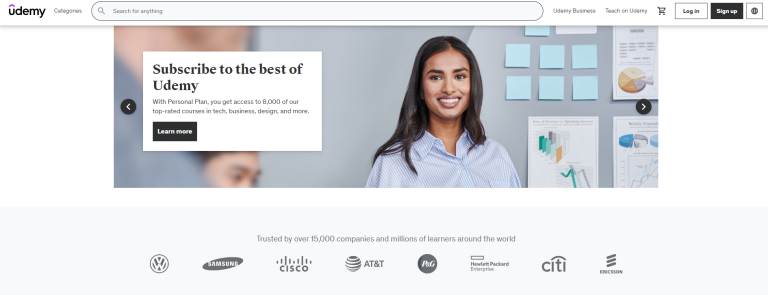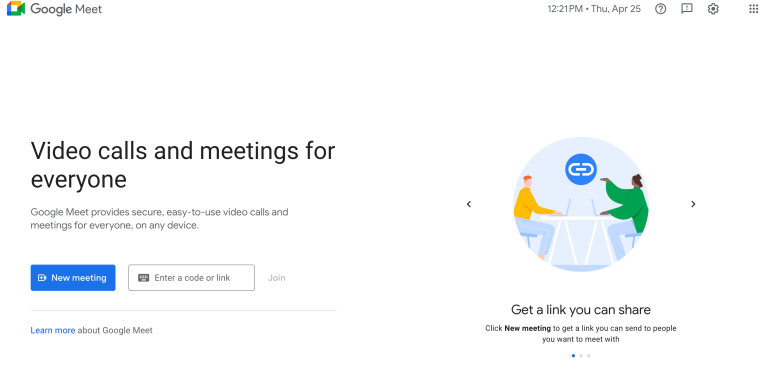How to Create Drip Course Module

If you’ve ever binge-watched an entire Netflix series in one sitting, you know the feeling. Three episodes in, your brain starts turning to mush. By episode six, you’re not really absorbing anything anymore. You’re just consuming content for the sake of it.
The same thing happens with online courses when you dump everything on students at once. They get overwhelmed, retention drops, and completion rates plummet. That’s where drip course modules come in, and they’re about to become your secret weapon for creating courses that people actually finish.
The Psychology Behind Why Drip Content Actually Works
Your brain isn’t designed to absorb massive amounts of information in single sessions. There’s real science behind this, and it starts with something called the spacing effect.
Back in the 1880s, a German psychologist named Hermann Ebbinghaus discovered that we remember information much better when we encounter it repeatedly over time, rather than cramming it all at once.
Think about how you learned to ride a bike. You didn’t jump on and start riding it in one afternoon. You practiced for short periods, took breaks, came back to it, and gradually built up your skills. Your brain had time to process what you learned, forget some of it, then strengthen those neural pathways when you practiced again.
“The spacing effect is one of the most robust findings in cognitive psychology. It’s not just about remembering facts, it’s about building lasting understanding.” – Dr. Robert Bjork, UCLA
This is exactly what happens in drip courses.
When students receive content in measured doses, they have time to process, practice, and integrate new concepts before moving forward. The slight difficulty of having to recall previous lessons when new content arrives actually strengthens their understanding.
Beyond the cognitive benefits, drip content taps into basic human psychology. Anticipation is a powerful motivator. When students know new content is coming, they stay engaged with your course between sessions. They think about what they’ve learned, they practice skills, and they look forward to what’s next.
Getting Your Course Structure Right From the Start
Before you even think about timing, you need to map out what you’re actually teaching and how it all connects together.
Start by identifying the core transformation your course provides.
- Are you teaching someone to build their first website?
- Master social media marketing?
- Learn photography basics?
Now work backwards. What does someone need to know right before they achieve that transformation? What about before that? Keep working backwards until you reach the very beginning where your students are starting from. This gives you a natural learning progression that makes sense to both you and your students.
Each module should focus on one core concept or skill. If you find yourself trying to cram multiple big ideas into a single module, split them up.
Choosing Your Drip Strategy

Not all drip strategies are created equal, and the right choice depends on your content, your audience, and your goals. Let’s break down the three main approaches and when each one works best.
Time-Based Drip
Time-based drip is the most straightforward approach. You release content at regular intervals regardless of what students are doing. This works particularly well when you want everyone moving through the material at roughly the same pace, or when your content builds heavily on previous lessons.
For most courses, releasing content every 2-3 days hits the sweet spot. Daily releases can feel overwhelming, especially for working adults who need time to implement what they’re learning.
Weekly releases often lead to momentum loss. Students forget what they learned the previous week and lose that sense of forward progress that keeps them engaged.
Progress-Based Drip
Progress-based drip unlocks new content only after students complete specific actions or assessments. This approach respects different learning speeds and ensures students have actually absorbed material before moving forward. It works exceptionally well for skill-based courses where mastery matters more than timing.
The challenge with progress-based systems is that they can isolate students from each other. When everyone is at different points in the course, it’s harder to build community and shared experiences. You’ll need to work extra hard on creating connection points.
Cohort-Based Drip
Cohort-based drip releases content on fixed dates, creating a shared experience for all students who start around the same time.
This strategy builds community and accountability, but it requires more intensive management and may not work for courses that need to be available year-round.
Drip Strategy Comparison
| Drip Strategy | Best For | Pros | Cons |
|---|---|---|---|
| Time-based | General knowledge, consistent pacing | Simple to manage, builds routine | Doesn’t account for different learning speeds |
| Progress-based | Skill mastery, complex topics | Ensures comprehension, flexible pacing | Can isolate students, harder to build community |
| Cohort-based | Community-focused courses | Strong accountability, shared experience | Limited enrollment windows, intensive management |
Structuring Individual Modules for Maximum Impact

Once you’ve chosen your drip strategy, you need to think about how each individual module is structured. The best drip modules follow a predictable pattern that helps students connect new information with what they already know.
Start each module with a brief recap of the previous lesson. This doesn’t need to be long or detailed. A simple “Last time we covered X, today we’re building on that with Y” helps students mentally prepare for new information and creates continuity in their learning experience.
The main content should be chunked into digestible pieces. Research shows that most people can only maintain focused attention for about 7-10 minutes at a time when learning new material. If your content is longer than that, break it up with questions, examples, or brief practice exercises.
End each module with a preview of what’s coming next. This serves two purposes:
- First, it helps students understand how current learning fits into the bigger picture.
- Second, it creates anticipation for the next release. A simple “Next time, we’ll take what you just learned about color theory and apply it to real client projects” keeps students thinking about your course between sessions.
Include some kind of action step or reflection question that students can work on during the waiting period. This doesn’t need to be a major assignment. Even something as simple as “Notice how three different websites use the principles we just discussed” keeps students engaged with the material.
Setting Up Notifications That People Actually Want to Receive
Your notification system can make or break your drip course. Done well, notifications create excitement and anticipation. Done poorly, they become annoying interruptions that students learn to ignore or, worse, unsubscribe from entirely.
The key is to make every notification valuable. Instead of generic “New lesson available” messages, tell students exactly what they’re getting and why it matters to them.
For example:
“Your lesson on advanced Facebook targeting is now live. After this one, you’ll know how to reach customers who are actually ready to buy”
This one gives students a clear reason to engage immediately.
Timing matters more than you might think. Most people engage with educational content in the evening, typically between 6-8 PM in their local time zone. If you’re serving a global audience, you’ll need to segment your notifications by region or pick a time that works reasonably well for your primary market.
Consider using a two-part notification system. Send a “coming tomorrow” message that builds anticipation, followed by the “now available” notification when content actually drops. This approach increases engagement because students are already thinking about your course when the content becomes available.
Here are some tips for creating effective communications. Don’t overthink it, just keep it as natural as possible:
- Personal greeting using the student’s name
- Clear subject line that creates curiosity without being clickbait
- Brief preview of what’s in the new content
- Progress indicator showing how far they’ve come
- Direct link to the new material
Building Engagement Between Content Drops
The time between content releases is just as important as the content itself. This is where many course creators miss huge opportunities to deepen learning and build community among their students.
Create discussion prompts or challenges that students can work on during waiting periods. These don’t need to be complex assignments.
Simple questions like “What’s one way you could apply today’s lesson to your current project?” keep students thinking about your material and create opportunities for peer interaction.
Gamification elements work particularly well in drip courses because they give students something to work toward between releases. Progress bars, completion badges, or streak counters tap into our natural desire for achievement and create positive associations with course participation.
Consider implementing “bonus content” days where you occasionally drop extra resources, templates, or insights between your regular releases. The unpredictability of these bonuses creates what psychologists call a variable reward schedule, which is incredibly effective at maintaining engagement over time.
Building community through forums, Facebook groups, or other platforms gives students a place to connect with peers who are on the same journey. When someone gets stuck or has questions, they have immediate support rather than waiting for your next office hours or email response.
Adding Flexibility

While structure is important in drip courses, rigid inflexibility will frustrate students and hurt your completion rates. The best drip courses build in reasonable accommodations while maintaining the core benefits of spaced learning.
Catch-up mechanisms are essential. Life happens, and students will occasionally fall behind your intended schedule. Provide clear guidance on how to get back on track without overwhelming them.
Some course creators offer “fast track” weekends where students can access multiple modules to catch up, while others simply extend access periods to accommodate slower progress.
Consider offering an “unlock all” option for students who have specific needs or learning preferences. Some people genuinely do better with immediate access to all materials, and forcing them into a drip schedule can create unnecessary friction. You might charge a premium for this option or require students to complete a certain percentage of the course in drip format first.
Advanced students or those retaking your course for review purposes might need different access patterns. Creating separate tracks or providing override options prevents you from losing these valuable students while maintaining structure for those who need it.
Choosing the Right Platform and Tools
Your drip course is only as good as the technology supporting it, and not all learning platforms handle drip content equally well. The features you need will depend on your specific strategy and audience, but some capabilities are non-negotiable.
Look for platforms that offer robust scheduling features with the ability to set both time-based and progress-based triggers. Conditional access is crucial. Students shouldn’t be able to jump ahead in your sequence, even if they’re curious or impatient.
Integration capabilities matter more than you might initially think. Your course platform should connect smoothly with your email marketing system, payment processor, and any community platforms you’re using. Manual data transfer between systems creates opportunities for errors and eats up time you should be spending on content creation.
Mobile optimization isn’t optional anymore. Most students will access at least some of your content on their phones or tablets, and a clunky mobile experience will hurt engagement and completion rates.
Popular platforms like Teachable, Thinkific, LearnDash, and Kajabi all offer solid drip functionality, but they each have different strengths. Teachable excels at marketing integration, Thinkific offers more customization options, LearnDash for complete flexibility, and Kajabi provides the most comprehensive all-in-one solution. Test the specific features you need before committing to any platform.
Post-Course Engagement and Next Steps
What happens after students complete your drip course is just as important as the course content itself. This is your opportunity to solidify the transformation you’ve provided and create ongoing relationships that benefit both you and your students.
Completion celebrations matter more than most creators realize. After weeks or months of working through your material, students deserve recognition for their achievement. This doesn’t need to be elaborate, but it should feel meaningful. Personalized certificates, completion badges, or even simple congratulatory emails help students feel proud of their accomplishment.
Collecting testimonials and reviews is much easier immediately after course completion when the experience is fresh and positive emotions are high. Build this request into your completion sequence, but make it easy and specific. Instead of asking for “a review,” ask for “a sentence about the biggest change this course created for you.”
Making It All Work Together
Creating effective drip course modules isn’t about following a rigid formula. It’s about understanding how people learn, respecting their time and attention, and building systems that support long-term success rather than quick consumption.
Start with your students’ transformation in mind, build structure that supports real learning, and be willing to adjust based on how people actually engage with your content.
The goal isn’t to create the perfect drip sequence on your first try. The goal is to create something good that you can make better over time.






